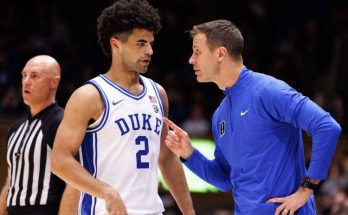Jackson Holliday, Gunnar Henderson, and Ryan O’Hearn have been standout players for their team, showing flashes of brilliance and the potential to be central figures in the lineup. However, despite their individual efforts, it has become increasingly clear that they need more support from the rest of the offense to truly make a sustained impact. Baseball is a team sport, and while individual performances can win games on occasion, consistent success depends on the collective contributions of the entire lineup. Holliday, Henderson, and O’Hearn have been carrying much of the offensive load, but the lack of production from other players has placed a heavier burden on their shoulders than might be sustainable over the long haul of a season.
Jackson Holliday, for instance, has shown a lot of promise at the plate. His ability to get on base, combined with solid plate discipline and occasional power, makes him a valuable asset. But baseball pitchers have long memories, and when the rest of the lineup isn’t consistently threatening, opposing teams can focus their pitching strategies on neutralizing him and his fellow key hitters. Without runners on base or threats following his at-bats, Holliday’s impact can be limited. This scenario puts him in situations where even well-executed hits might not translate into runs, reducing the overall effectiveness of his performance.
Similarly, Gunnar Henderson has demonstrated a skill set that suggests he could be a cornerstone of the offense for years to come. His mix of contact hitting, speed, and defensive prowess sets him apart. Yet, like Holliday, he needs his teammates to contribute consistently to turn his solid at-bats into productive innings. Baseball is often described as a game of “situations,” where the context surrounding a hitter is just as important as the hit itself. If those who bat before or after Henderson aren’t driving in runs or getting on base, the opportunities for him to make a difference are diminished. The weight of expectation on Henderson grows in these circumstances, and the pressure to carry the offense can affect performance over time.
Ryan O’Hearn’s role in the lineup is equally significant. Known for his power and ability to drive the ball, O’Hearn’s presence in the middle of the order can be a rallying point for the team’s offense. Yet, without consistent production from the lineup around him, pitchers can challenge him more directly, daring him to make plays with fewer concerns about the runners on base or other threats in the lineup. This lack of support can lead to diminished run production overall, which in turn puts more strain on the team’s pitching staff to keep games close or hold leads.
The struggles of the offense as a whole highlight a critical challenge faced by many teams in baseball: balancing individual talent with cohesive team performance. It’s not uncommon for a few players to stand out statistically, but when the rest of the lineup fails to produce, it limits the team’s ability to sustain rallies or mount comebacks. Coaches and managers work tirelessly to find the right combinations of players, trying to maximize the output of the lineup as a whole rather than relying on just a handful of contributors. The current situation, where Holliday, Henderson, and O’Hearn are doing much of the heavy lifting, underscores the need for more balanced offensive contributions.
On the pitching side, the picture is somewhat mixed but equally concerning in certain respects. While the overall pitching quality has been decent, there have been specific issues that have hampered the team’s ability to close out games effectively. Notably, the last two starting pitchers have had their outings cut unexpectedly short, both ending in the first inning. This is a troubling development for any team, as starting pitchers are generally expected to provide several innings of solid work, giving the bullpen a chance to manage the later innings. When starters exit early, it puts additional pressure on relief pitchers and can disrupt the flow and strategy of the game.
The early exits of these two starters raise questions about health, preparation, or simply bad luck. Sometimes, a pitcher might struggle right from the first pitch due to mechanical issues, lack of command, or facing an especially tough opposing lineup prepared to exploit any weakness. Other times, a pitcher might be dealing with underlying physical issues that prevent them from maintaining their usual effectiveness. Regardless of the cause, the impact on the team is significant. Early exits force the bullpen to cover more innings than usual, which can lead to fatigue and reduced effectiveness in subsequent games.
Moreover, the mental and strategic aspects of the game are affected when starters cannot go deep into games. Managers have to adjust their game plans on the fly, often bringing in relievers earlier than anticipated, which can leave fewer options available for high-leverage situations later in the game. The disruption can also affect the rhythm of the team, as starters often set the tone and pace. When the starting pitcher struggles or exits early, it can unsettle the defense and the offense alike, leading to a domino effect of challenges.
Despite these setbacks, it’s important to acknowledge that the pitching staff as a whole has shown competence and moments of effectiveness. Decent pitching performances have been enough to keep the team competitive in many games, preventing blowouts and maintaining hope for a comeback. But baseball is a game of balance, and without consistent offensive support, even good pitching can only do so much. Runs are ultimately needed to win games, and if the offense remains inconsistent, the margin for error in pitching shrinks dramatically.
The combination of these factors—the need for more offensive support behind Holliday, Henderson, and O’Hearn, and the challenges with starting pitching—paints a picture of a team in a delicate phase of development. There is clear talent on the roster, but the pieces have yet to come together fully. Baseball teams often go through stretches where everything clicks and other times when adjustments are necessary to find the right formula for sustained success. The current stretch feels like one of those transitional periods where learning and growth are essential.
In terms of what lies ahead, the path to improvement likely involves several elements. First, the coaching staff will need to continue working with the players to help them find consistency and confidence at the plate. This might involve refining approaches to hitting, focusing on situational hitting, and encouraging a mindset that balances patience with aggression. Players who have struggled may benefit from adjustments in mechanics or mental preparation, aiming to boost their contributions and take some pressure off the key offensive players.
Second, there may be a need to reconsider the lineup construction or playing time allocation to find a combination that sparks better overall offensive production. Sometimes, changing the batting order or giving opportunities to different players can unlock new energy and results. This is a balancing act, as managers want to maximize the strengths of their best players while encouraging those who need more playing time to develop and contribute.
Third, addressing the pitching issues will be crucial. If the early exits from the last two starters are due to mechanical problems or minor injuries, the medical and training staff will need to get involved to ensure those pitchers return to form quickly and safely. If the problems are more related to mental approach or strategy, coaches and pitchers must work together to make necessary adjustments. The goal will be to extend the length of starts and reduce the burden on the bullpen, stabilizing the pitching rotation to provide a reliable foundation for the team.
Finally, the mental and emotional resilience of the team will play a significant role. Baseball seasons are long and filled with ups and downs, and the ability to stay focused, positive, and supportive of one another can make a big difference. Players like Holliday, Henderson, and O’Hearn can serve as leaders both on and off the field, setting examples of work ethic and determination. Their performances can inspire teammates to elevate their own games, creating a more balanced and effective unit.
Jackson Holliday, Gunnar Henderson, and Ryan O’Hearn have shown they have the talent and potential to be key offensive contributors, but they need more consistent support from the rest of the lineup to help the team succeed. On the pitching side, although overall efforts have been decent, the recent early exits of the last two starting pitchers have created additional challenges, limiting the team’s ability to maintain momentum in games. The combination of these factors suggests that the team is at a crossroads, needing adjustments and improvements to fully capitalize on its potential. With the right focus on development, strategy, and teamwork, there is every reason to believe that the offense can deepen its contributions and the pitching staff can regain stability, setting the stage for stronger performances moving forward.


